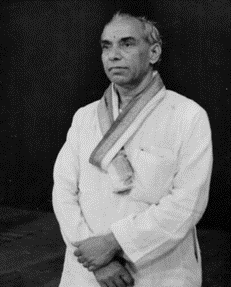PREVIOUS
Freedom Fighters from Tamil Nadu Part – 15
Freedom Fighters from Tamil Nadu Part – 15
(இதன் தமிழ் வடிவத்திற்கு இங்கே சொடுக்கவும்)
78. P.N. Srinivasan
Birth and Early Life
- Year of Birth: 1929
- Place of Birth: Ponvilaindhakulathur village, Chengalpattu, Tamil Nadu.
- Father: P.N. Gopalan.
Involvement in the Freedom Movement
- Gandhian Ideals:
- P.N. Srinivasan was a devoted follower of Gandhian principles, dedicated his life to nurturing and promoting Gandhian values.
- He actively participated in the Vedaranyam Salt Satyagraha in 1932.
Profession
- P.N. Srinivasan joined the Integral Coach Factory in Perambur and served there until his retirement in 1987.
- Editorial Work: P.N. Srinivasan was the editor of the ‘Bharata Mani’ monthly Tamil, contributing to Tamil journalism and literature.
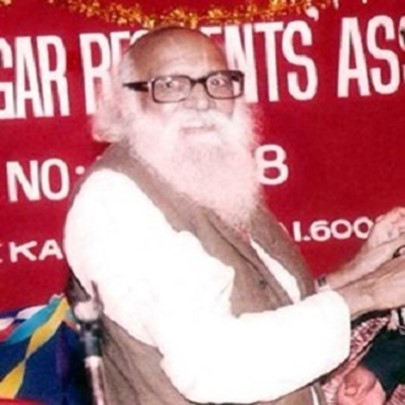
Early Life and Education
- Date of Birth: 14 August 1905.
- Place of Birth: Madurai, Madras Presidency.
- He was son of N.M. Rayalu Iyer.
Education:
- N.M.R. Subbaraman studied at Sourashtra High School, Madurai.
- He attended Visva-Bharati University, Santiniketan.
Freedom Movement Involvement
- Initial Involvement: Known as ‘Madurai Gandhi,’ he was a staunch follower of Mahatma Gandhi and deeply influenced by Gandhian ideals.
Key Activities:
- N.M.R. Subbaraman refused to pursue higher studies in London in 1922 to join the freedom struggle.
- He became a primary member of the Madurai District Congress Committee in 1923 and its President in 1925.
- He was an instrumental in selecting 27 youths for the Vedaranyam Salt March in 1930.
- He participated in Toddy Shop picketing and various Satyagraha Movements.
- He was imprisoned for five years, along with his wife, for his activism.
Political and Legislative Roles
- N.M.R. Subbaraman served as the Chairman of Madurai Municipality from 1935 to 1942.
- He was a member of the Madras Legislative Assembly both before and after independence.
- Additionally, he was elected to the Lok Sabha from the Madurai constituency from 1962 to 1967.
Social and Educational Contributions
- Harijan Welfare:
- N.M.R. Subbaraman was deeply committed to the emancipation of Harijans.
- He worked through Tamil Nadu Harijan Sevak Sangh to establish Harijan Hostels.
- He organized a temple entry conference with A. Vaidyanatha Iyer to enable the depressed classes to enter Meenakshi Amman Temple.
- Bhoodan Movement: He donated 100 acres of land to the movement initiated by Vinoba Bhave.
Gandhian Legacy:
- N.M.R. Subbaraman served as the secretary of the Gandhi Works Publications Committee, which published Gandhiji’s works in Tamil.
- He contributed to establishing the first Gandhi Museum in India in Madurai.
- He was the chairman of Gandhi Niketan Ashram at T. Kallupatti, near Madurai.
- And he was active with Gandhi Gram in Madurai.
Cultural and Academic Impact
- N.M.R. Subbaraman was a member of the First Senate of Madras University and was instrumental in introducing a course on Gandhian thoughts.
- Additionally, he helped establish the first Gandhi Memorial Museum in Madurai.
Family:
- His wife, Parvatavardhani, was also involved in the freedom struggle.
Legacy:
- Mahatma Gandhi stayed at his bungalow during a visit to Madurai.
- In 2005, the Government of India issued a stamp commemorating his 100th birthday.
- In 2007, a women’s college was named after him.
Death
- N.M.R. Subbaraman passed away on January 25, 1983, at the age of 77.
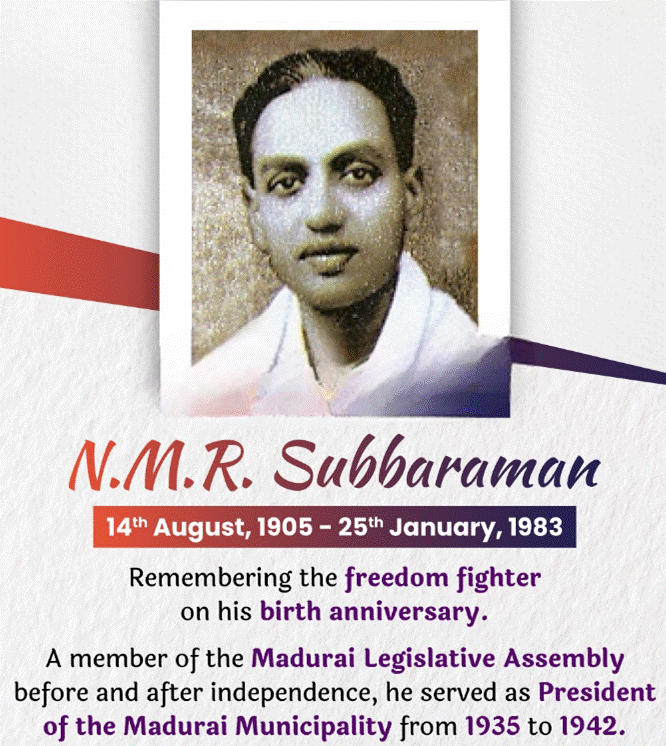
80. Immanuvel Devendrar / Immanuel Sekaran
Birth and Early Life
- Date of Birth: 9 October 1924
- Place of Birth: Sellur, Ramanathapuram district, Tamil Nadu
Involvement in the Freedom Movement
- Quit India Movement:
- Immanuvel Devendrar participated in the Quit India Movement at the age of 18 and was imprisoned for three months.
Military and Political Work
- British Indian Army:
- Immanuvel Devendrar enlisted in the British Indian Army in 1945; upon discharge, returned to Ramanathapuram district.
- Congress Work:
- Immanuvel Devendrar worked for the Indian National Congress (INC) to improve the education, rights, and representation of the Pallars, his community.
- He mobilized efforts to demand equality.
Religious Conversion and Name Change
- He was converted to Hinduism and took the name Immanuel Sekaran as part of his political strategy.
Death
- Immanuvel Devendrar passed away on September 11, 1957, at the age of 32.
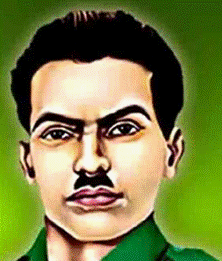
81. Kovai Subri
Birth and Early Life
- Name: Subramaniam (popularly known as Kovai Subri).
- Date of Birth: 1898.
- Place of Birth: Coimbatore, Tamil Nadu.
- Parents: V.R. Krishna Iyer and Parvathi.
Involvement in the Freedom Movement
- Education and Early Activism:
- Subramaniam quit college to join the freedom movement, inspired by Gandhiji's ideals.
- He became the Secretary of the Town Congress Committee in 1921.
Imprisonments:
- Subramaniam imprisoned for one year in 1923 for participating in the Flag Satyagraha under Sardar Vallabhai Patel at Nagpur.
- He spent over five years in prison on various occasions, during which he composed songs compiled into a book titled Desiya Geethangal.
Khadi Movement:
- Subramaniam started a Khadi center at Padiyur near Uthukuli, praised by Gandhiji in Young India.
- Role as Translator:
- Subramaniam served as Gandhiji's translator during Gandhiji’s tours of Coimbatore and Nilgiris, affectionately called a ‘loudspeaker’ by Gandhiji.
- Political Career
- Subramaniam served as Municipal Chairman of Coimbatore from 1938 to 1942.
Legislative Career:
- Subramaniam was elected as Coimbatore City MLA between 1947 and 1952.
- His wife Kamala was imprisoned with her six-month-old daughter for participating in the Salt Satyagraha of 1930 and again in 1932.
Death
- Subramaniam passed away in 1993.
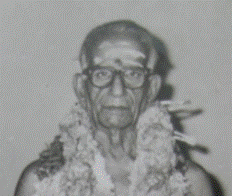
82. Gomathi Sankara Dikshitar
Birth and Early Life
- Date of Birth: March 1889.
- Place of Birth: Sutthamalli village, Tirunelveli district, Tamil Nadu.
- Parents: Ganapathi Rama Dikshitar and Meenakshi Ammal.
Education
- Gomathi Sankara Dikshitar had attended schools from George Millar Middle School, Kallidaikurichi and Thirtha Bharathi High School, Ambasamudram.
Involvement in the Freedom Movement
- Early Activism:
- Gomathi Sankara Dikshitar joined the Indian national movement during the turmoil caused by the partition of Bengal in 1905.
- He participated in the Vande Mataram movement, boycott of foreign goods, and promoted the use of Swadeshi materials.
Khadi and Swadeshi Movement:
- Gomathi Sankara Dikshitar promoted Khadar materials, invested in power looms, and trained weavers.
Role in the Freedom Struggle:
- Gomathi Sankara Dikshitar was the custodian of Vanchinathan and others who killed Collector Ashe.
- He met Gandhiji and shifted to moderate methods, following ahimsa.
- He started a school at Kallidaikurichi named after Tilak and worked as a teacher.
Imprisonments:
- He was imprisoned for one year for his activities during the Salt Satyagraha, Prohibition movement, and other protests between 1930 and 1932.
- He was imprisoned for 18 months during the Quit India Movement in 1942.
Post-Independence
- Legislative Career:
- Gomathi Sankara dikshitar served in the legislature three times as a member after independence.
Death
- Gomathi Sankara dikshitar passed away in 1972.
83. E. Krishna Iyer
Early Life and Education
- Date of Birth: 9 August 1897
- Place of Birth: Kallidaikurichi, Madras Presidency.
Education:
- Krishna Iyer did his schooling at Ambasamudram High School.
- He graduated from Madras Christian College.
- He studied law at Madras Law College.
- He practiced as a lawyer at the Madras High Court until 1943.
Involvement in the Freedom Movement
- Krishna Iyer joined the Indian National Congress in the 1930s.
- He actively participated in the independence movement.
- He was imprisoned multiple times for his activism.
- He promoted the nationalist songs of Subrahmanya Bharathi.
Association with Art
- Theatrical Career: Krishna Iyer joined a drama troupe and performed female roles.
- Interest in Classical Arts: He developed a keen interest in classical arts and carnatic music.
Bharatanatyam Revival Movement
- Early Work: Krishna Iyer joined Suguna Vilasa Sabha and learned Sadir (a precursor to Bharatanatyam).
- Madras Music Academy: He co-founded with Rukmini Devi Arundale to revive and preserve Bharatanatyam.
- Dance Form Rebranding: He proposed renaming Sadir to Bharatanatyam to dissociate it from the devadasi system and to give it respect.
- Efforts: He worked to remove sexually explicit expressions from the dance and encouraged Brahmin girls to learn Bharatanatyam.
Political and Civic Engagement
- Congress Committee: Krishna Iyer was a member of the Congress Committee.
- He was elected as a Member of the Legislative Council (MLC) from Mylapore in 1938.
- He contributed to the establishment of the Sathyamurthy Sagar (Poondi Reservoir).
Cultural Contributions
- Bharatanatyam: Krishna Iyer promoted Bharatanatyam as an art form independent of its devadasi origins.
- He organized Bharatanatyam performances and supported the dance form’s survival.
- Music Academy: He served as a secretary of the Madras Music Academy.
- Art Critic: He wrote for the Indian Express, Dinamani, and Kalki.
Awards and Honors
- Padma Shri awarded by the Government of India in 1966 for his contributions to dance and music.
- Krishna Iyer received Sangeetha Kala sikhamani from The Indian Fine Arts Society, Chennai in 1957.
Death
- Krishna Iyer passed away on January 3, 1968, at the age of 71.
